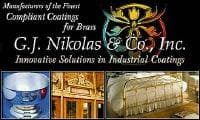
Curated with aloha by
Ted Mooney, P.E. RET

The authoritative public forum
for Metal Finishing 1989-2025

-----
Cleaning antique microscope
I have just obtained my great-grandfather's R&J Beck microscope made in the late 19th century. It is all brass and VERY tarnished. MY questions are: Wasn't lacquer used then, and if so, is it possible that there is dirt over the lacquer? Should I chance polishing it myself? Also what is best way to clean optics, I don't know about optical coatings back then. I am never going to sell it and want to use it. Maybe I should leave it alone, but doesn't oxidation get worse?
Thanks,
James D [last name deleted for privacy by Editor]- Manchester, New Hampshire
Hello James,
Yes, lacquer was used at the turn of last century, I don't think there is a problem with dirt on the lacquer - the lacquer has likely disintegrated many years ago. I'd think you could try polishing the tarnished areas with Brasso ⇦ this on eBay or Amazon [affil links] . If it doesn't look right or is too time consuming, someone in your area will do it for you. Sorry, I'm not familiar with optic coatings, but I think they usually use a very flat black color to help stop the light from reflecting.
Good luck,
Jake KochG. J. Nikolas &Co.,Inc.
Bellwood, Illinois

Q, A, or Comment on THIS thread -or- Start a NEW Thread